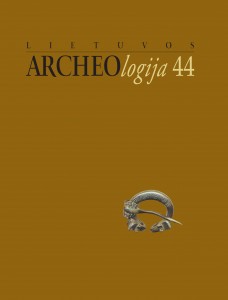MITYBA LIETUVOJE 4500–1200 CAL BC MAISTO LIEKANŲ
KERAMIKOJE BENDRŲJŲ MĖGINIŲ IZOTOPINIŲ TYRIMŲ
DUOMENIMIS
Diet in Lithuania from 4500-1200 cal BC based on data from bulk isotopic analysis of food residue on pottery
Author(s): Gytis Piličiauskas, Raminta Skipitytė, Carl HeronSubject(s): Archaeology, Cultural history, Economic history, Ancient World
Published by: Lietuvos istorijos institutas
Keywords: pottery; food residue; chemical and isotope analyses; diet;
Summary/Abstract: The article presents the results of chemical and stable isotope (carbon (δ13C) and nitrogen (δ15N)) analyses conducted between 2014–2017 on visible deposits of food residue found on pottery. Information about the diet of prehistoric populations has so far been applied sporadically in Lithuania and represents a new research opportunity, the development of which was begun in collaboration with UK scientists after the Research Council of Lithuania supported two projects. As a consequence, alongside the initial insights, hypotheses, and conclusions, an effort was made to reveal the potential of new methods in the investigation of prehistoric societies. The results obtained are a surprisingly good fit with the archaeological, zooarchaeological, and bone collagen stable isotope data and help to build a more comprehensive picture of the prehistoric economy and diet. This investigation confirms a distinct transition from aquatic to terrestrial food, i.e. from 9shing to husbandry at many locations in Lithuania circa 2500 cal :;, together with the appearance of the peoples of the Corded Ware culture. It is important to note that the exploitation of aquatic food resources still remained high in coastal settlements even in the period of the Corded Ware culture.
Journal: Lietuvos archeologija
- Issue Year: 2018
- Issue No: 44
- Page Range: 9-37
- Page Count: 29
- Language: Lithuanian

